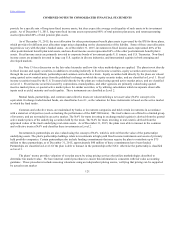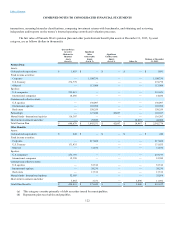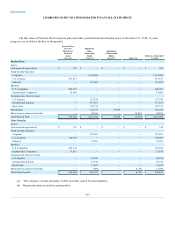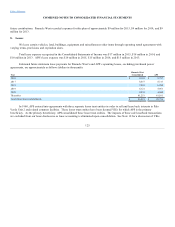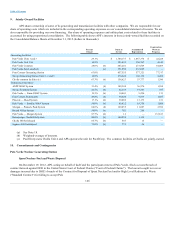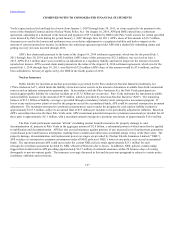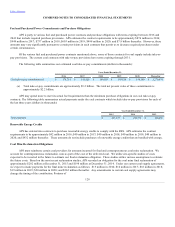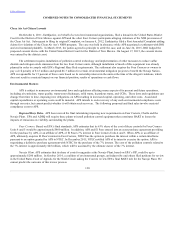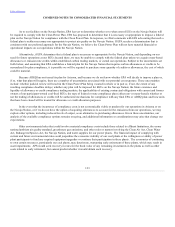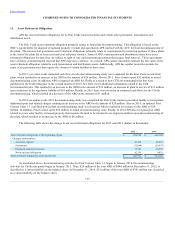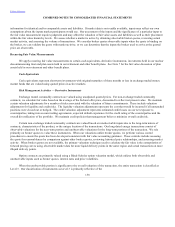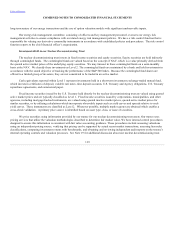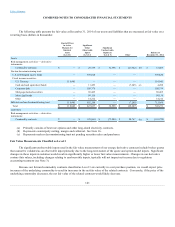APS 2015 Annual Report Download - page 136
Download and view the complete annual report
Please find page 136 of the 2015 APS annual report below. You can navigate through the pages in the report by either clicking on the pages listed below, or by using the keyword search tool below to find specific information within the annual report.
Table of Contents
COMBINED NOTES TO CONSOLIDATED FINANCIAL STATEMENTS
Cholla. APS believes that EPA’s final rule as it applies to Cholla, which would require installation of SCR controls with a cost to
APS of approximately $100 million (excludes costs related to Cholla Unit 2 which was closed on October 1, 2015), is unsupported and
that EPA had no basis for disapproving Arizona’s SIP and promulgating a FIP that is inconsistent with the state’s considered BART
determinations under the regional haze program. Accordingly, on February 1, 2013, APS filed a Petition for Review of the final BART
rule in the United States Court of Appeals for the Ninth Circuit. Briefing in the case was completed in February 2014.
In September 2014, APS met with EPA to propose a compromise BART strategy wherein, pending certain regulatory approvals,
APS would permanently close Cholla Unit 2 and cease burning coal at Units 1 and 3 by the mid-2020s. (See Note 3 for details related to
the resulting regulatory asset.) APS made the proposal with the understanding that additional emission control equipment is unlikely to
be required in the future because retiring and/or converting the units as contemplated in the proposal is more cost effective than, and
will result in increased visibility improvement over, the current BART requirements for NOx imposed on the Cholla units under EPA's
BART FIP. APS’s proposal involves state and federal rulemaking processes. In light of these ongoing administrative proceedings, on
February 19, 2015, APS, PacifiCorp (owner of Cholla Unit 4), and EPA jointly moved the court to sever and hold in abeyance those
claims in the litigation pertaining to Cholla pending regulatory actions by the state and EPA. The court granted the parties' unopposed
motion on February 20, 2015. On October 16, 2015, ADEQ issued the Cholla permit, which incorporates APS's proposal, and
subsequently submitted a proposed revision to the SIP to the EPA, which would incorporate the new permit terms. APS is unable to
predict when or whether APS's proposal may ultimately be approved by the EPA.
Mercury and Air Toxic Standards ("MATS"). In 2011, EPA issued rules establishing maximum achievable control technology
standards to regulate emissions of mercury and other hazardous air pollutants from fossil-fired plants. APS estimates that the cost for
the remaining equipment necessary to meet these standards is approximately $8 million for Cholla (excludes costs related to Cholla Unit
2 which was closed on October 1, 2015). No additional equipment is needed for Four Corners Units 4 and 5 to comply with these
rules. SRP, the operating agent for the Navajo Plant, estimates that APS's share of costs for equipment necessary to comply with the
rules is approximately $1 million. The United States Supreme Court’s recent decision in Michigan vs. EPA reversed and remanded the
MATS proceeding back to the DC Circuit Court. The Circuit Court then remanded the MATS rule back to EPA to address rulemaking
deficiencies identified by the Supreme Court. Further EPA action on the MATS rule is pending. This proceeding does not materially
impact APS. Regardless of how EPA addresses the deficiencies in the MATS rulemaking, the Arizona State Mercury Rule, the
stringency of which is roughly equivalent to that of MATS, would still apply to Cholla.
Coal Combustion Waste. On December 19, 2014, EPA issued its final regulations governing the handling and disposal of CCR,
such as fly ash and bottom ash. The rule regulates CCR as a non-hazardous waste under Subtitle D of RCRA and establishes national
minimum criteria for existing and new CCR landfills and surface impoundments and all lateral expansions consisting of location
restrictions, design and operating criteria, groundwater monitoring and corrective action, closure requirements and post closure care,
and recordkeeping, notification, and Internet posting requirements. The rule generally requires any existing unlined CCR surface
impoundment that is contaminating groundwater above a regulated constituent’s groundwater protection standard to stop receiving
CCR and either retrofit or close, and further requires the closure of any CCR landfill or surface impoundment that cannot meet the
applicable performance criteria for location restrictions or structural integrity.
Because the Subtitle D rule is self-implementing, the CCR standards apply directly to the regulated facility, and facilities are
directly responsible for ensuring that their operations comply with the rule’s
131


